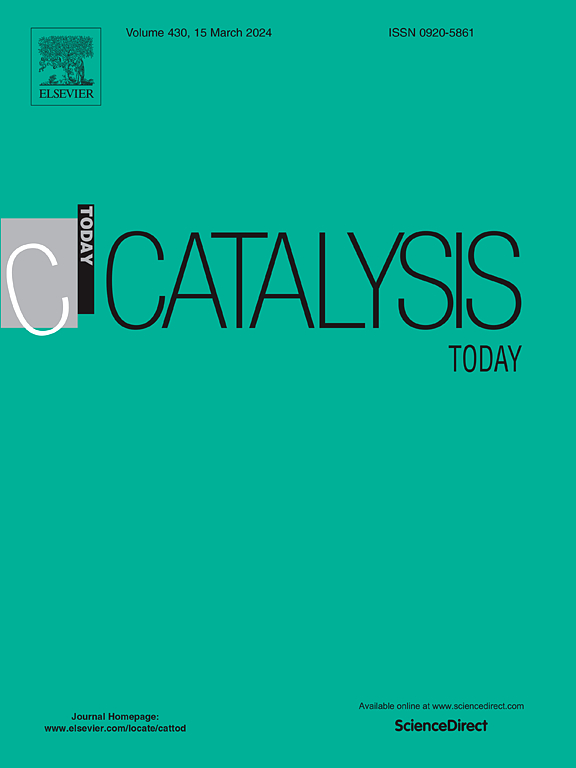Piezoelectric catalyst BaTiO3 and K0.5Na0.5NbO3 induced cellular and antibacterial response in poly (vinylidene fluoride) for self-powered implants for orthopedic applications
IF 5.2
2区 化学
Q1 CHEMISTRY, APPLIED
引用次数: 0
Abstract
Despite of excellent biocompatibility of piezoelectric poly(vinylidene fluoride) (PVDF), lower resistance towards bacteria and piezoelectric coefficient restricts it’s widespread application as self-powered implant. Towards this end, this study investigates the effect of incorporation of piezo-catalysts BaTiO3 (BT) and K0.5Na0.5NbO3 (KNN) into PVDF on piezo-catalytic characteristics, cellular and antibacterial response. Thin films of PVDF and its composites were prepared using the solvent casting method and hot compression molding. The piezo-catalytic response is observed to be notably higher in the composites than that of pure PVDF. The measured values of voltage, and power for PVDF, PVDF-10 wt% BT (PVDF-10BT) and PVDF-10 wt% KNN (PVDF-10KNN) are (24 V, ∼4.4 µW/cm2), (92 V, ∼15.8 µW/cm2) and (103 V, ∼19.4 µW/cm2), respectively. The presence of piezo-catalyst BT and KNN significantly enhance the cell proliferation, osteogenic differentiation (ALP) of MG-63 osteoblast-like cells and hemocompatibility. Incorporation of piezo-catalysts is observed to improve significantly the antibacterial response against Escherichia coli (E. coli) and Staphylococcus aureus (S. aureus) due to a higher production of reactive oxygen species. These results suggest that PVDF modified with BaTiO3 and K0.5Na0.5NbO3 piezo-catalysts are promising candidates as self-powered implants for orthopedic applications.
压电催化剂BaTiO3和K0.5Na0.5NbO3诱导聚偏氟乙烯自供电植入物的细胞和抗菌反应
聚偏氟乙烯压电材料(PVDF)具有良好的生物相容性,但其对细菌的抗性和压电系数较低,限制了其作为自供电植入物的广泛应用。为此,本研究探讨了压电催化剂BaTiO3 (BT)和K0.5Na0.5NbO3 (KNN)掺入PVDF对压电催化特性、细胞和抗菌反应的影响。采用溶剂浇铸法和热压铸法制备了PVDF及其复合材料薄膜。压电催化反应在复合材料中明显高于纯PVDF。PVDF、PVDF-10 wt% BT (PVDF- 10bt)和PVDF-10 wt% KNN (PVDF- 10knn)的电压和功率测量值分别为(24 V, ~ 4.4 µW/cm2)、(92 V, ~ 15.8 µW/cm2)和(103 V, ~ 19.4 µW/cm2)。压电催化剂BT和KNN的存在显著增强MG-63成骨样细胞的增殖、成骨分化(ALP)和血液相容性。压电催化剂的掺入可以显著提高对大肠杆菌(E. coli)和金黄色葡萄球菌(S. aureus)的抗菌反应,因为它可以产生更多的活性氧。这些结果表明,由BaTiO3和K0.5Na0.5NbO3压电催化剂修饰的PVDF是有希望作为自供电植入物应用于骨科的候选材料。
本文章由计算机程序翻译,如有差异,请以英文原文为准。
求助全文
约1分钟内获得全文
求助全文
来源期刊

Catalysis Today
化学-工程:化工
CiteScore
11.50
自引率
3.80%
发文量
573
审稿时长
2.9 months
期刊介绍:
Catalysis Today focuses on the rapid publication of original invited papers devoted to currently important topics in catalysis and related subjects. The journal only publishes special issues (Proposing a Catalysis Today Special Issue), each of which is supervised by Guest Editors who recruit individual papers and oversee the peer review process. Catalysis Today offers researchers in the field of catalysis in-depth overviews of topical issues.
Both fundamental and applied aspects of catalysis are covered. Subjects such as catalysis of immobilized organometallic and biocatalytic systems are welcome. Subjects related to catalysis such as experimental techniques, adsorption, process technology, synthesis, in situ characterization, computational, theoretical modeling, imaging and others are included if there is a clear relationship to catalysis.
 求助内容:
求助内容: 应助结果提醒方式:
应助结果提醒方式:


